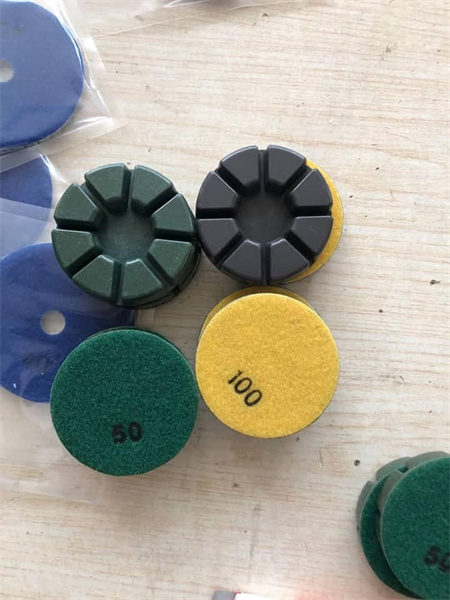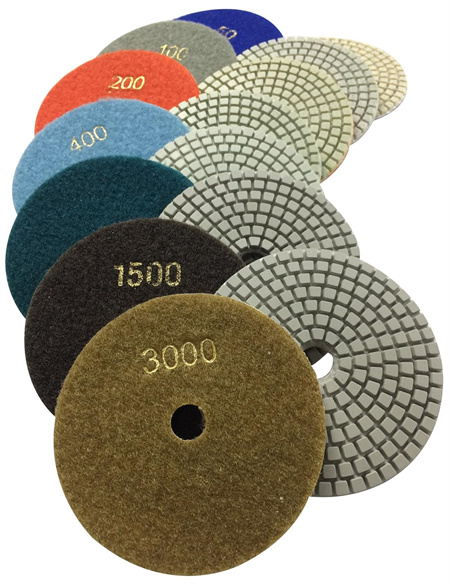Choosing the Right Diamond Pad Thickness for Your Project
When it comes to achieving the perfect finish in polishing and grinding, whether for stone, concrete, or other hard materials, the choice of diamond pad thickness can significantly impact your results. The right thickness can determine the efficiency, smoothness, and longevity of your project. But with so many options available, how do you choose the ideal diamond pad thickness for your specific needs?
Understanding the role of the diamond pad in your project is crucial. The diamond pads are typically used in surface preparation, floor grinding, and polishing applications. The thickness of the pad plays a critical role in how it interacts with the material being worked on, affecting the quality of the finish, the speed of the job, and the durability of the tool. Let’s dive deeper into why the right thickness matters and how to pick the perfect one for your task.
The Science Behind Diamond Pad Thickness
Diamond pads are made of synthetic diamonds embedded in a resin or metal bond, designed for grinding and polishing a variety of surfaces. The thickness of the pad refers to how much material is available for the diamonds to interact with the surface. Thicker pads generally provide more cushion, while thinner pads tend to be more aggressive, offering greater control and precision.

When to Choose a Thicker Diamond Pad
Thicker diamond pads are best used for more aggressive grinding tasks, especially when you need to remove a significant amount of material quickly. This makes them ideal for tasks such as:
1. Concrete Grinding: When preparing concrete floors for polishing, a thicker pad allows for more durability, helping to tackle rough surfaces and remove old coatings more effectively.
2. Floor Preparation: For uneven or damaged surfaces, a thicker diamond pad can even out imperfections and provide better results when smoothing the floor.
3. Heavy Duty Applications: Whether you’re working with granite or other hard stones, thicker pads handle the strain of constant use, giving you a more efficient tool for heavy-duty grinding.
The additional thickness also provides more cushioning, which is beneficial when working on softer or more delicate surfaces, as it prevents damage to the material while still allowing for effective grinding or polishing.
When a Thinner Diamond Pad Makes Sense
While thicker pads are great for heavy-duty grinding, thinner pads are often the go-to choice for fine polishing or more delicate projects. A thinner pad offers greater control and precision, especially when you need to:
1. Polish Finishes: If you’re aiming for a high-gloss finish, a thinner pad is often the best option. It helps achieve a smooth, flawless surface, which is crucial for materials like marble or granite countertops.
2. Detail Work: For smaller or more intricate tasks, such as edges or corners, a thinner diamond pad provides the flexibility and accuracy needed to polish fine details without over-grinding the surrounding area.

In essence, thinner pads give you more control over the polishing process, making them ideal for projects that require finesse rather than raw power.
Finding the Right Balance
While there are clear advantages to both thicker and thinner diamond pads, there’s also a middle ground. For most general-purpose tasks, you may want to opt for a medium-thick diamond pad. This provides a balanced combination of durability, versatility, and performance, making it an excellent all-around choice for various types of grinding and polishing.

Other Factors to Consider
While thickness is a major factor in choosing the right diamond pad, it’s not the only one. You should also consider the grit of the diamond pad. Finer grits are better for polishing and finishing, while coarser grits are perfect for heavy grinding and surface prep. Additionally, the type of material you’re working with will influence your choice. Harder materials like granite or concrete will require a more durable and thicker pad, while softer stones or metals will respond better to thinner, finer pads.
In some cases, the equipment you’re using will also influence your decision. Heavy-duty grinders may benefit from thicker pads that can withstand the power, while smaller hand tools might be better suited to thinner pads that provide more precise control.
Conclusion
Choosing the right diamond pad thickness is an essential step in ensuring the success of your project. Whether you’re polishing a marble countertop to a glossy shine or grinding down a rough concrete floor, the thickness of your diamond pad directly impacts the speed, precision, and overall quality of your work. Consider your specific needs, the materials you’re working with, and the desired finish, and choose the pad that will help you achieve the best results with efficiency and ease. With the right diamond pad, your project will not only look great but will also stand the test of time.
